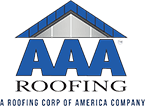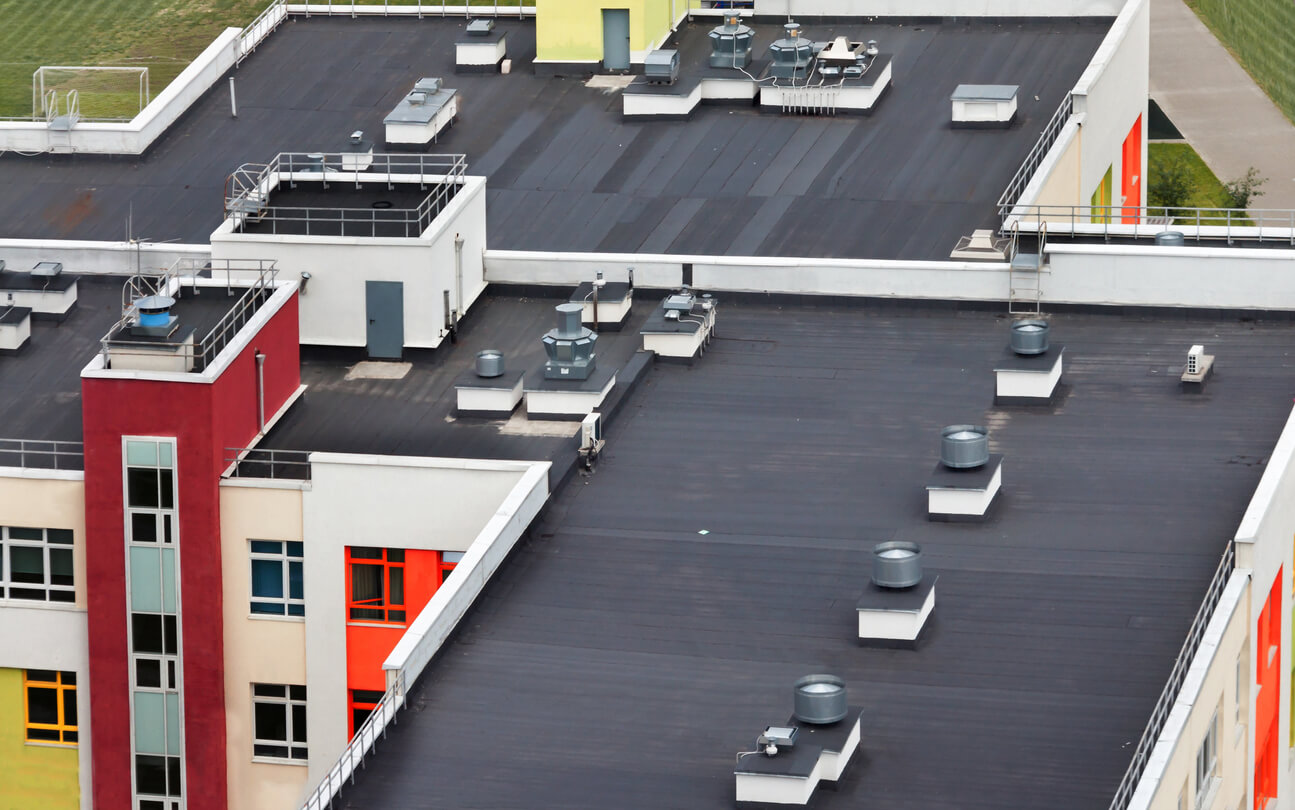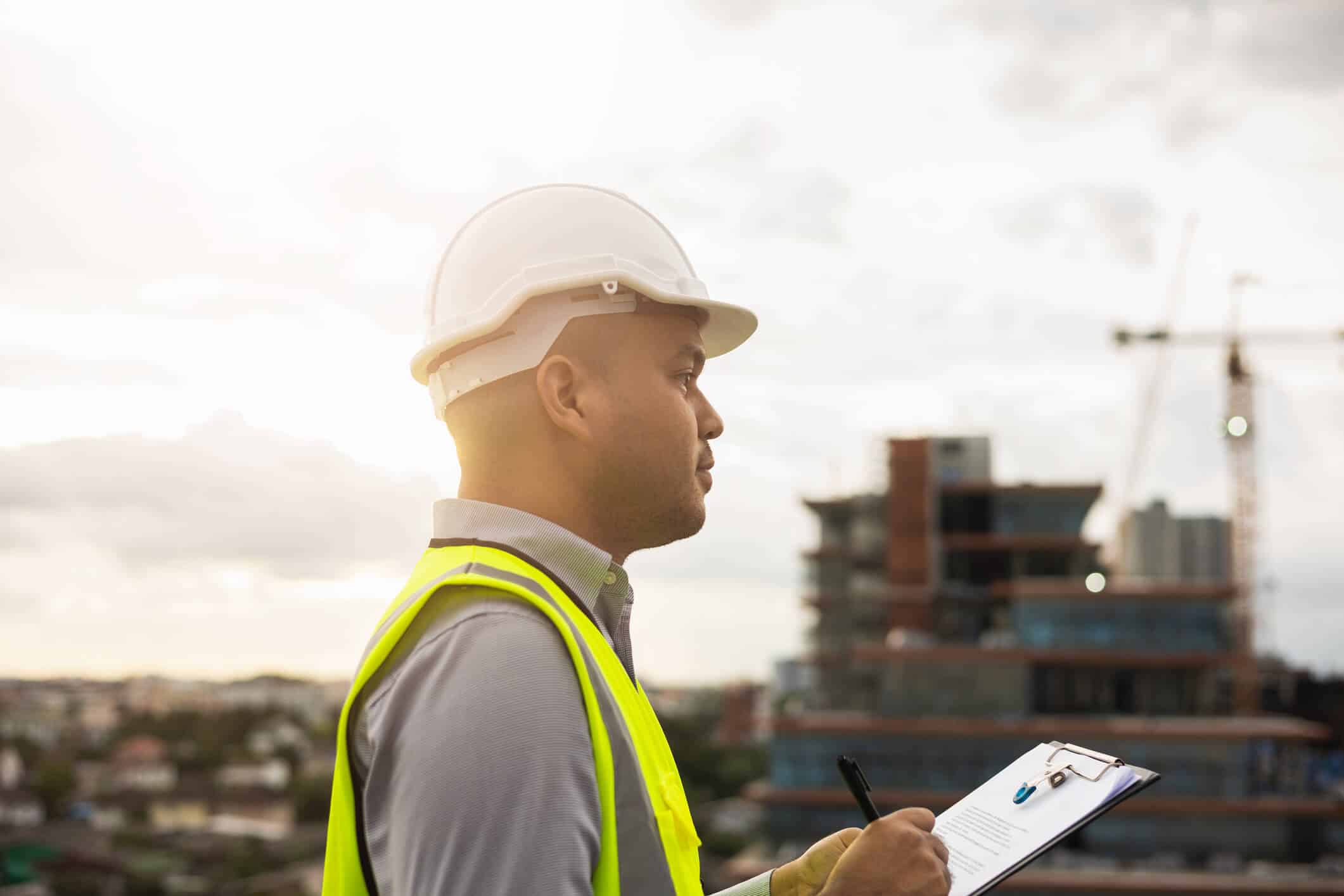One good thing about working with the leading commercial and industrial roofer in the Western States is that their team of experts will help you decide which commercial flat roof system is best for your commercial flat roof replacement.
There are pros and cons for all types of systems. Choosing the right one depends on various factors, including weather patterns, wind exposure, building height, anticipated foot traffic, and building aesthetics. Once you’re aware of the different flat roof types, be sure to schedule an industrial roofing inspection for further consultation.
Contents
Types of Commercial Flat Roofing
Here are four commercial flat roof types that will last.
TPO/PVC (Single-Ply Membranes)
TPO (thermoplastic polyolefins) and PVC (polyvinyl chloride) are the most common types of thermoplastic or single-ply membranes. These single-ply membranes are wide sheets of a vinyl-like material that often come in large rolls.
The thermoplastic membranes adhere to a clean and properly-prepared substrate. Then, the TPO or PVC membranes are seamed together with heat.
The Benefits of TPO and PVC Systems
The benefits of a thermoplastic system are that these systems are often white in color and offer the benefits that come with a reflective roof. They also tend to be more chemically resistant, which may be beneficial in the food production industry when oils and fats are released through the roof’s exhaust system.
However, this type of single-play system is prone to punctures. Also, it cannot withstand extreme heat conditions and may degrade over time to exposure to ultraviolet light.
If you choose a single-ply membrane for your commercial or industrial roof, make sure you hire commercial flat roof contractors with a lot of experience with this type of installation.
BUR
Built-Up Roof Systems (BUR) is another one of the flat roof options. It has been used in the U.S. for decades and is sometimes referred to as a “tar and gravel” roof.
The built-up roof system is composed of layers of bitumen (asphalt) and fabrics called roofing felts. The layers are reinforced with either glass-fiber or organic mats and, when joined with the bitumen, form a durable roofing membrane.
How Long Does a BUR Roofing System Last?
The BUR roofing system can last many decades and form excellent protection to the structure. If one layer breaks down, multiple other layers provide immediate protection. Besides offering a tough, durable membrane, the system responds well to thermal shock and building stress.
However, over time, petroleum-based products become dry and brittle, and cracks may start to form. Also, this system can be expensive to install.
Make sure you choose the right flat roofing contractors for the job because the number of layers used in a BUR system makes a difference. You don’t want to hire a company that will cut corners.
Coatings
Coatings systems, or liquid-applied roof membranes, have many benefits. They are highly elastic and easily applied to contoured surfaces.
However, silicone coating systems may leave a more slippery surface than other types of systems. Additionally, this type of system needs to be properly maintained from year to year.
Metal
One of the oldest roofing systems for flat roofs is the metal roof. Metal roofs last a long time and are highly durable heat resistant. However, metal roofing materials tend to be higher priced than other commercial flat roofing systems.
What is the Best Flat Roof System?
We want to give you a clear answer to this question, but the answer depends on your situation. If you need a commercial flat roof repair or are looking for a commercial flat roof construction company, contact AAA Roofing. We are a family-owned and operated commercial roofing company specializing in new roof construction, flat roofing services, roof replacement, tenant improvement, maintenance, and leak detection.






